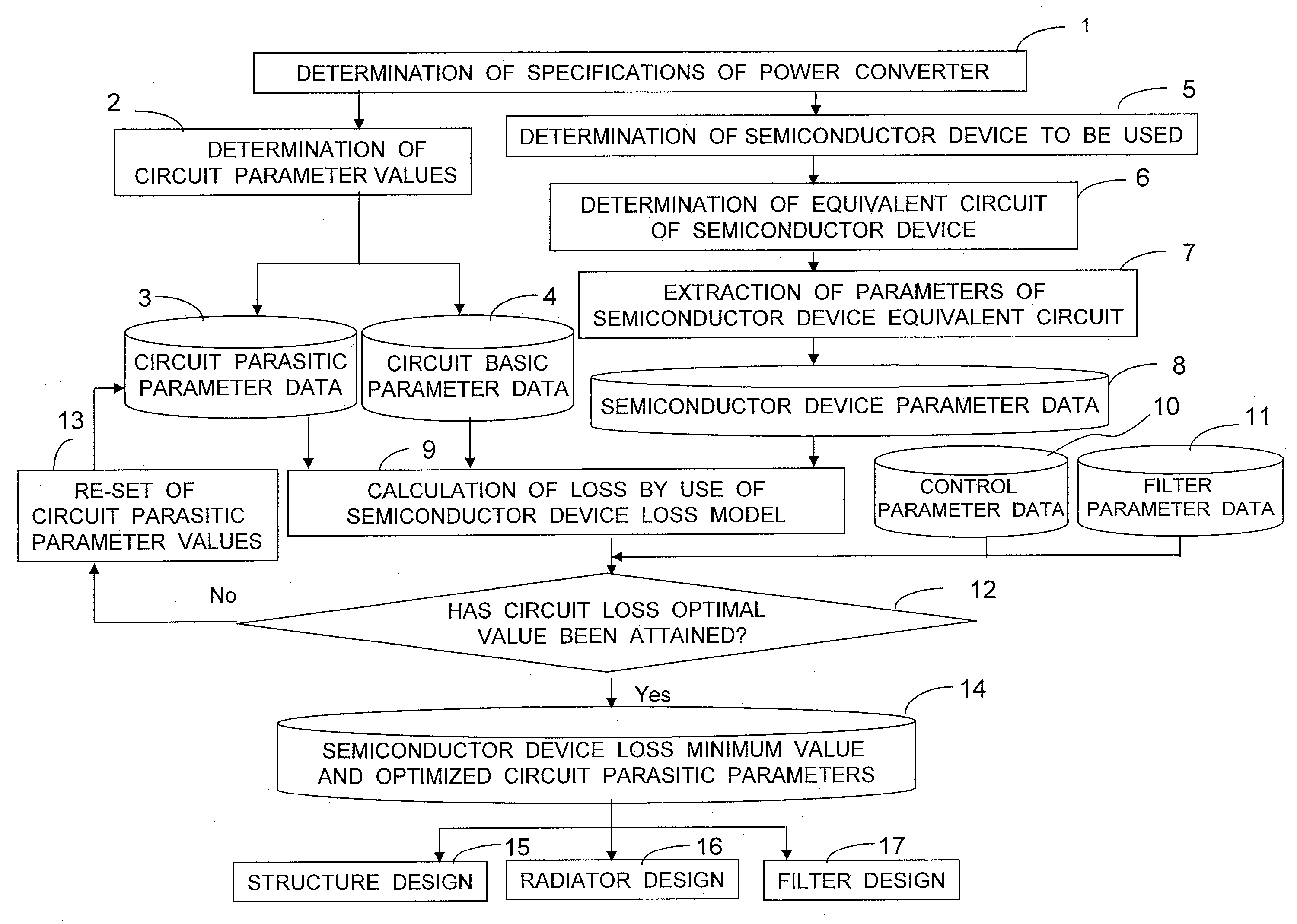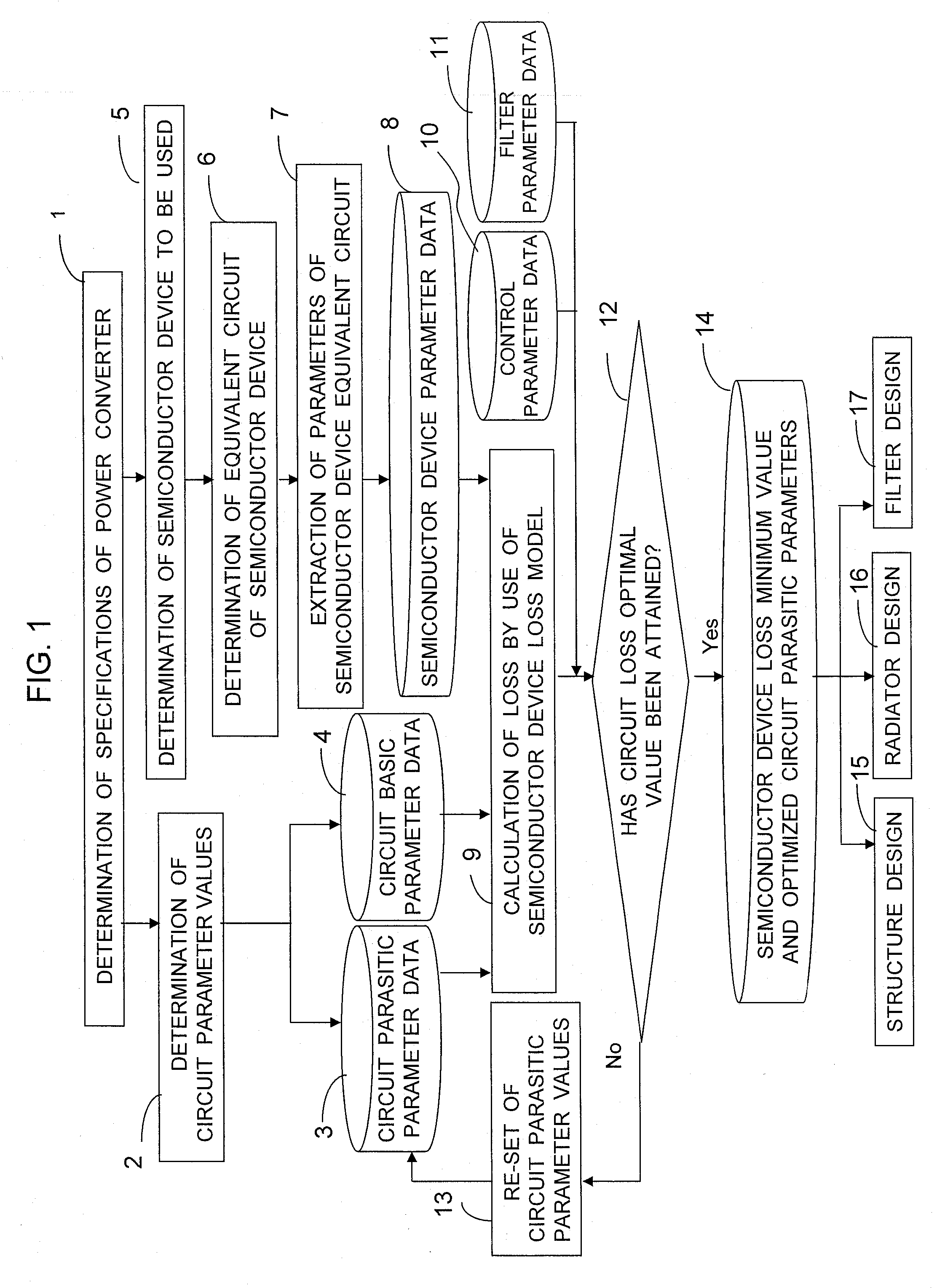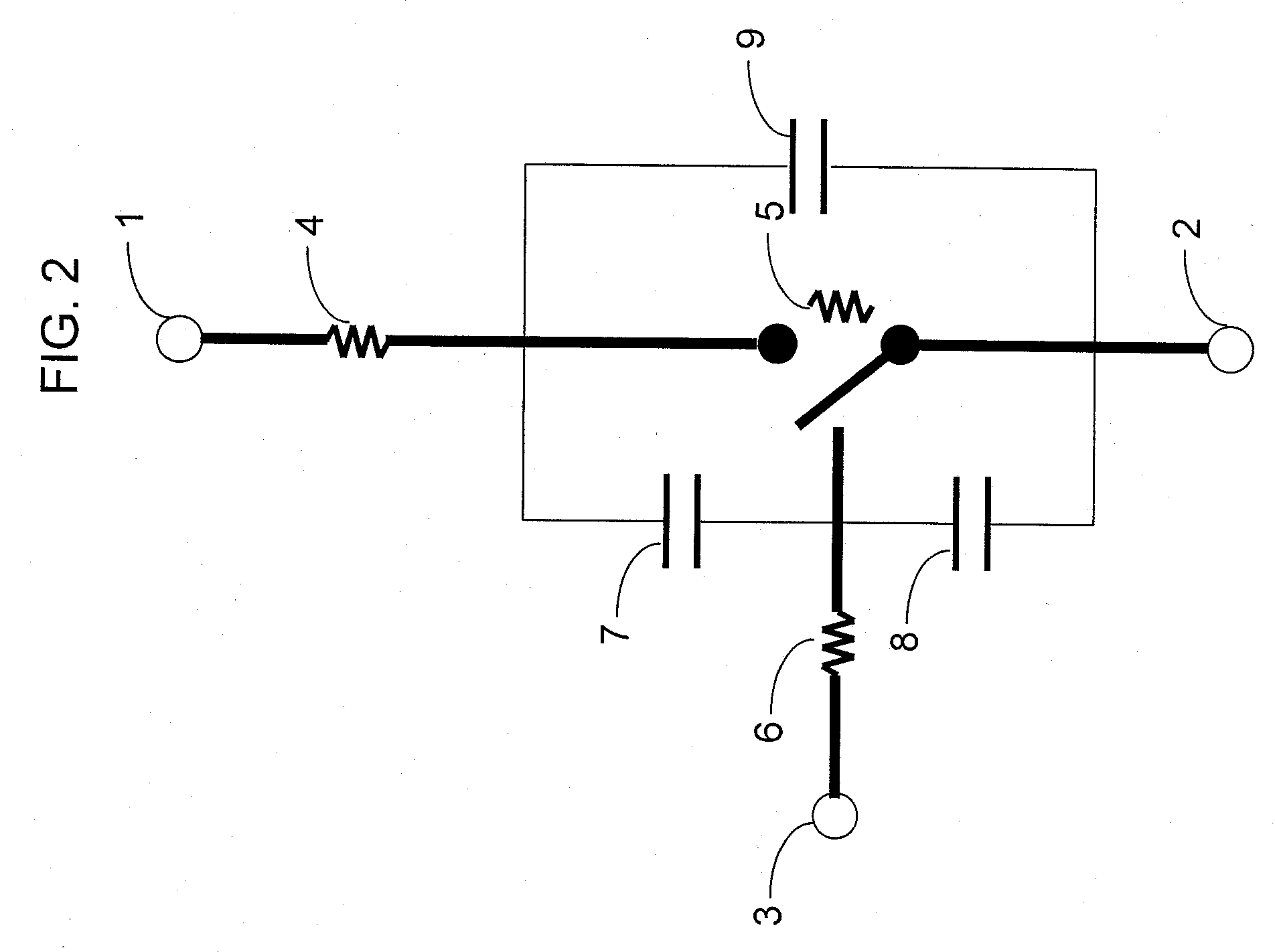Method, system and program for designing power converter
a power converter and power density technology, applied in power conversion systems, instruments, computing, etc., can solve the problems of inability to accurately and quantitatively design the loss of semiconductor devices, so as to reduce the volume of the cooling unit, increase the output power density of the power converter, and accurately calculate the
- Summary
- Abstract
- Description
- Claims
- Application Information
AI Technical Summary
Benefits of technology
Problems solved by technology
Method used
Image
Examples
example 1
[0182]FIG. 19 is an equivalent circuit of an experimental apparatus which has a three-phase full-bridge inverter configuration and which is used for quantification of interrelations of Steps 12, 13, and 14 of FIG. 10. This experimental circuit is composed of a three-phase full bridge circuit 1, which includes semiconductor devices and a wiring structure, a passive filter 3 composed of filter inductors and filter capacitors, and a control system 4. The three-phase full bridge circuit 1, which includes semiconductor devices and a wiring structure, is formed by connecting three single-phase half bridge circuits 2 in parallel. Each of the single-phase half bridge circuits 2 is composed of semiconductor devices, circuit parasitic inductances 5, 6, and 7, circuit parasitic capacitances 8 and 9, gate inductances 10 and 11, and gate resistances 12 and 13. The circuit parasitic inductances, the circuit parasitic capacitance, the gate inductances, and the gate resistances are realized by exte...
example 2
[0185] Next, with reference to the experimental apparatus shown in FIG. 20, there will be described an example of quantification of the interrelation between the control / driver design and the device / main-circuit design which is performed in Step 12 of FIG. 10, which is a processing step for creating databases for power converter design. The semiconductor device loss and semiconductor device over-voltage greatly depend on switching frequency, switching speed, and switching pattern, which are control parameters, and circuit parasitic inductances and circuit parasitic capacitances, which are device / main-circuit parameters. The semiconductor device loss and semiconductor device over-voltage are obtained through simulation or experimentally.
[0186]FIG. 22 is an example of quantification of the interrelation between the control / driver design and the device / main-circuit design which is performed in Step 12 of FIG. 10. The semiconductor device loss was measured, while the switching frequenc...
example 3
[0187] There will be described an example of quantification of the interrelation between the device / main-circuit design and the filter design which is performed in Step 13 of FIG. 10, which is a processing step for creating databases for power converter design. The semiconductor device over-voltage greatly depends on circuit parasitic parameters, and is experimentally measured by making use of the parameter-variable circuit board of FIGS. 19, 20, and 21. Meanwhile, the filter frequency characteristic can be experimentally measured by making use of an existing measurement apparatus such as an impedance analyzer. Therefore, noise which appears on the load side as a result of passage of semiconductor device over-voltage through the filter can be experimentally measured for arbitrary circuit parameters. FIG. 23 shows the semiconductor device over-voltage for the case where the circuit parasitic inductance was changed. The horizontal axis represents the circuit parasitic inductance, and ...
PUM
 Login to View More
Login to View More Abstract
Description
Claims
Application Information
 Login to View More
Login to View More - R&D
- Intellectual Property
- Life Sciences
- Materials
- Tech Scout
- Unparalleled Data Quality
- Higher Quality Content
- 60% Fewer Hallucinations
Browse by: Latest US Patents, China's latest patents, Technical Efficacy Thesaurus, Application Domain, Technology Topic, Popular Technical Reports.
© 2025 PatSnap. All rights reserved.Legal|Privacy policy|Modern Slavery Act Transparency Statement|Sitemap|About US| Contact US: help@patsnap.com



